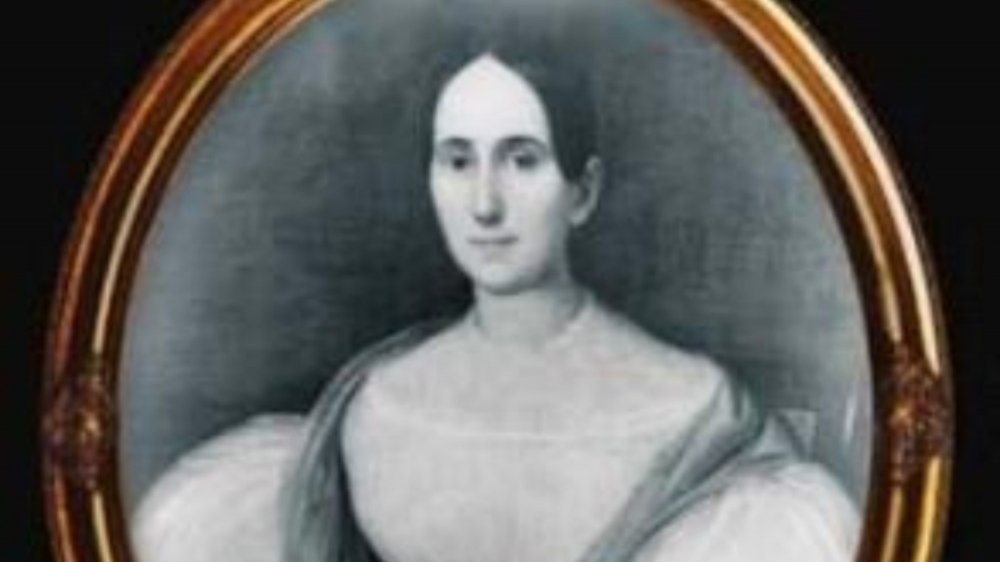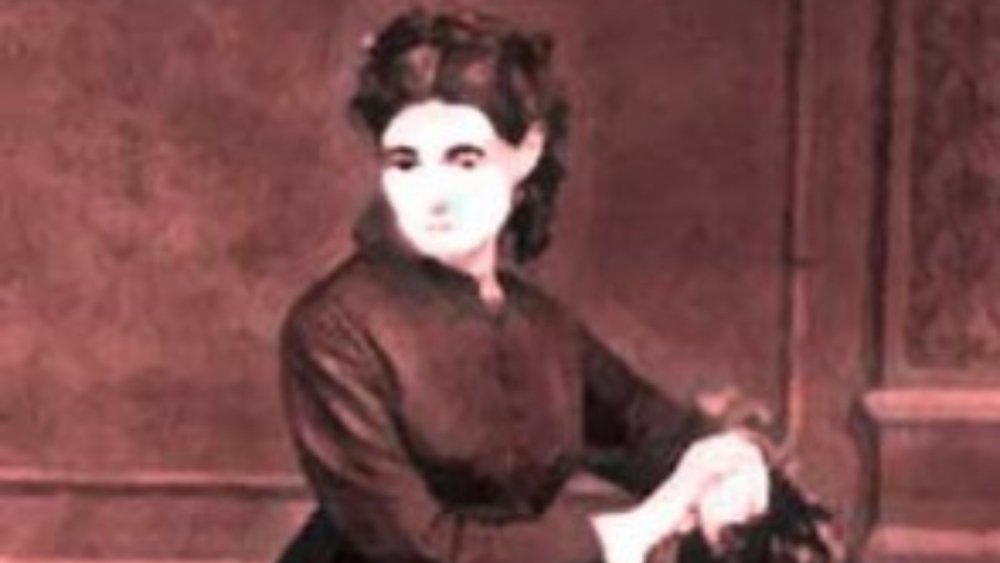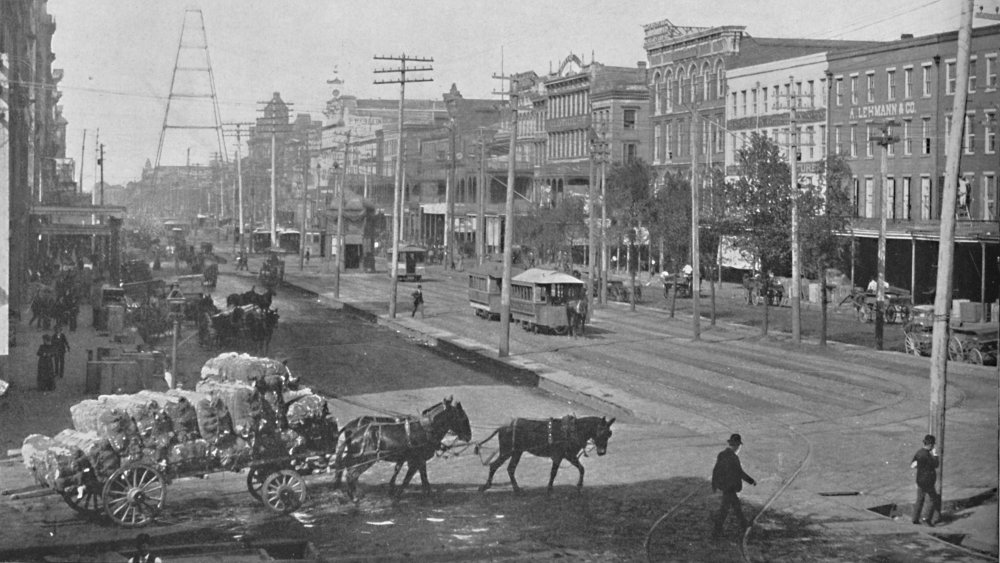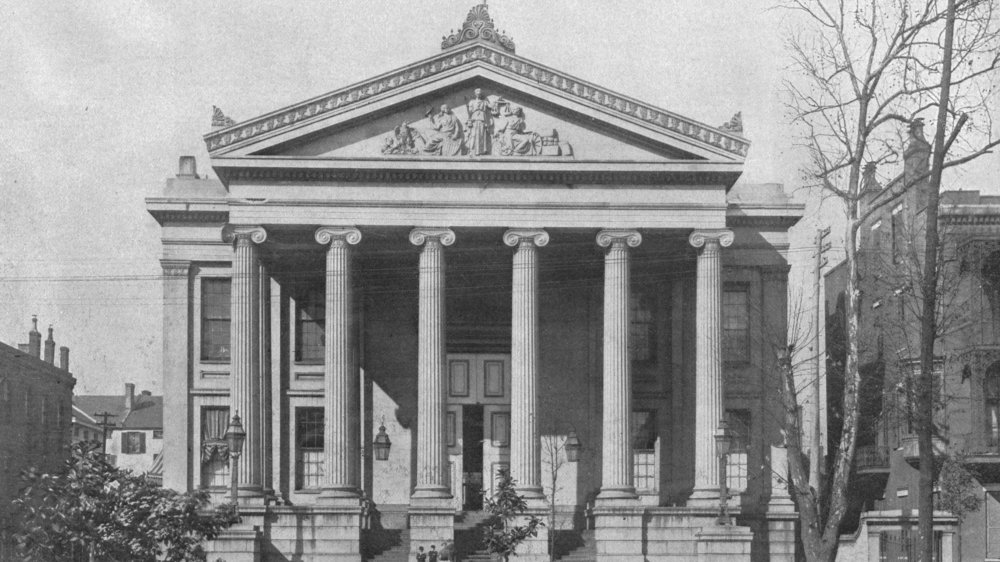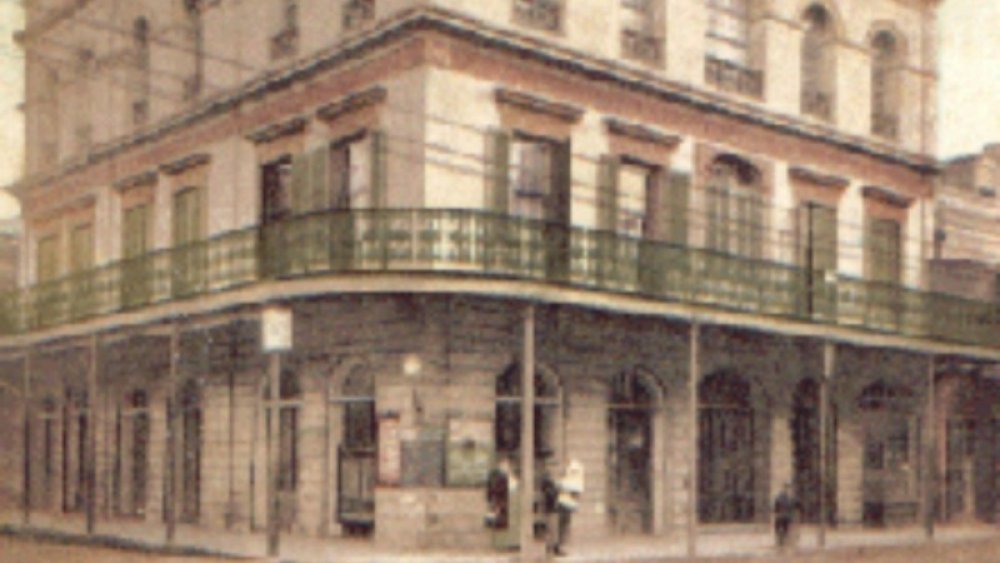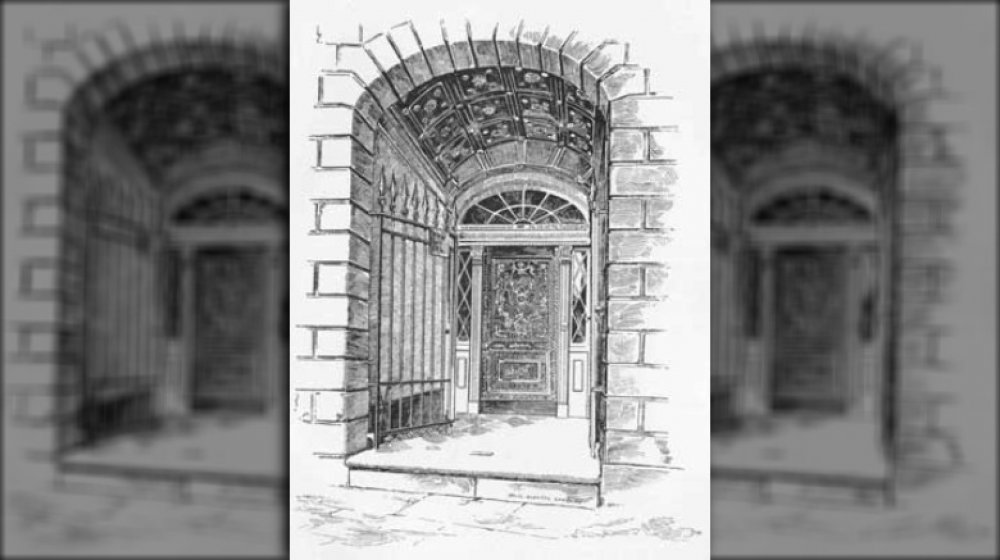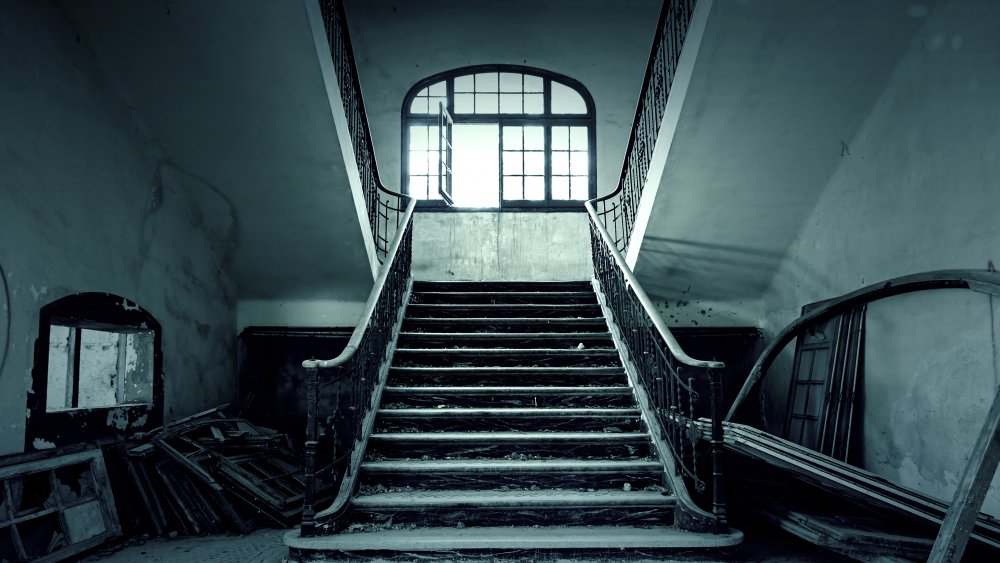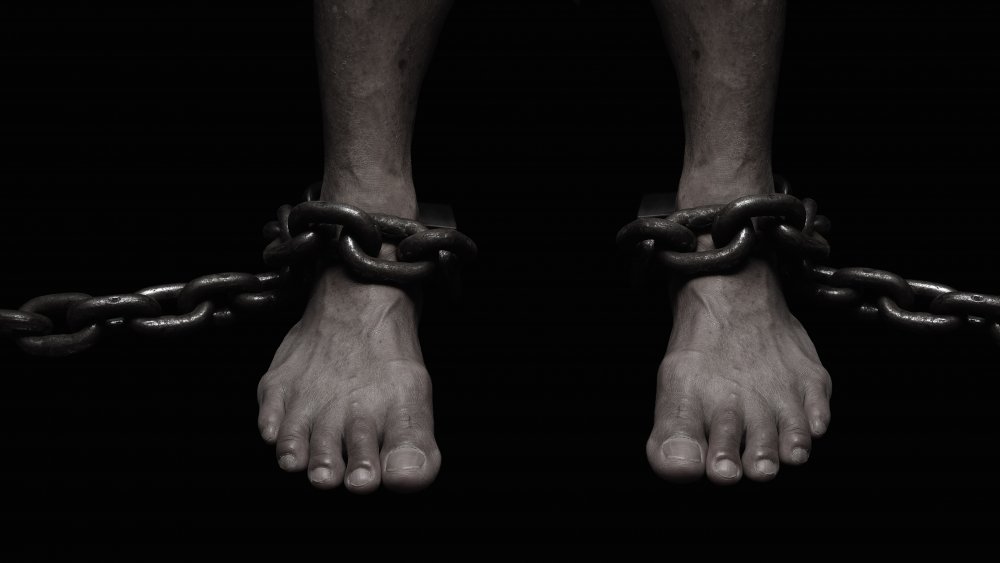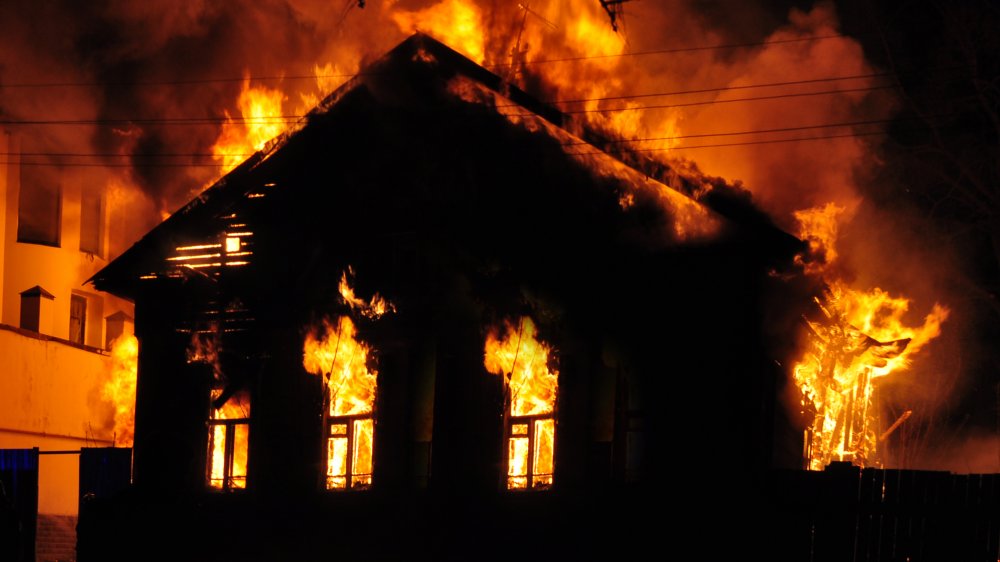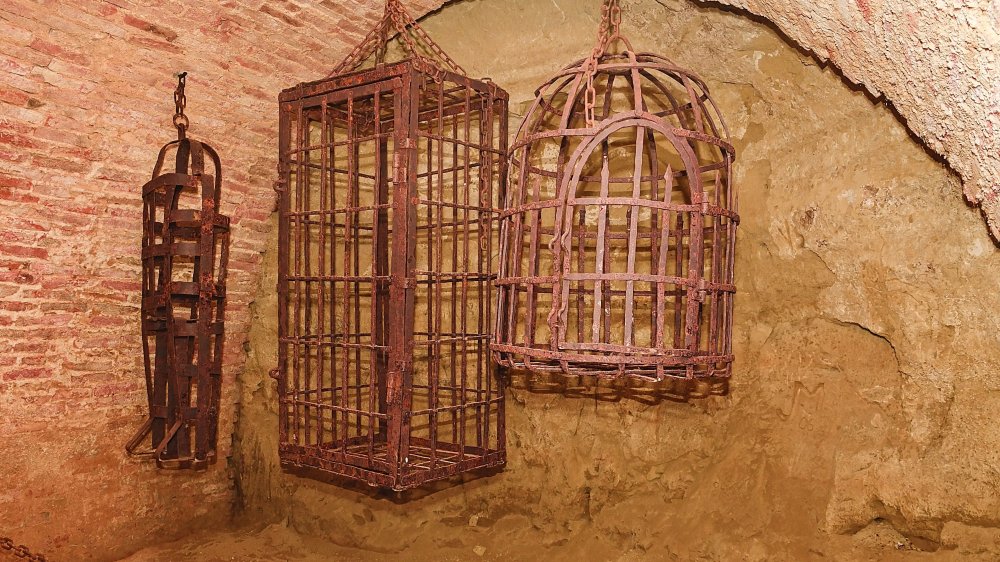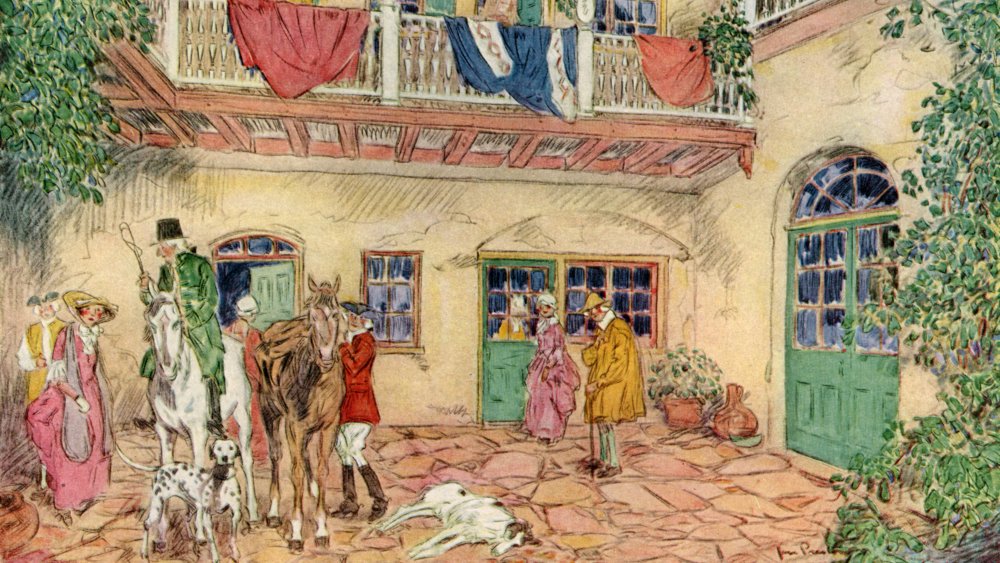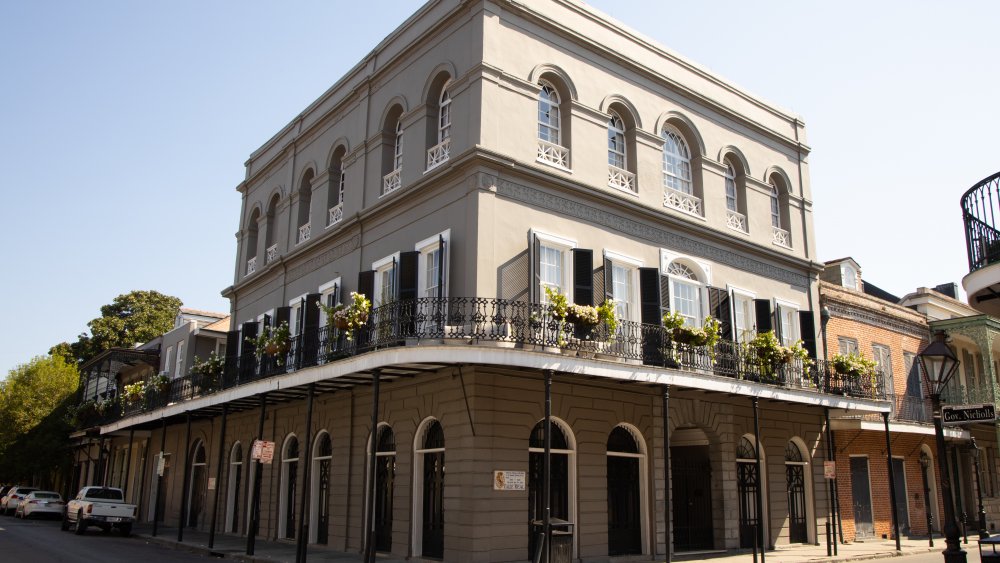The Messed Up Truth Of Socialite Serial Killer Delphine LaLaurie
Delphine LaLaurie, the thrice thrice-married socialite from New Orleans high society, was known for her beauty, her prominent family, and the elaborate galas and social events that she hosted at her beautiful mansion at 1140 Royal Street in the French Quarter. But the gracious host with the privileged upbringing was harboring dark secrets inside her expensively decorated home.
For years, LaLaurie had been brutally restraining, abusing, and torturing her slaves, forcing them to live in inhumane conditions. Rumors of her cruelty began to swirl, and authorities even investigated her on multiple occasions. However, LaLaurie continued her abuse until April 10, 1834, when flames broke out in the kitchen of her house. The fire, set by an elderly and desperate cook who had endured enough torture, finally exposed LaLaurie's secrets and destroyed her reputation. She was forced to flee New Orleans, but her infamous mansion, which remains on the corner of Royal Street, is still said to be haunted by the souls of those who suffered there.
Who was Delphine LaLaurie?
Delphine LaLaurie was a New Orleans native, born on March 19, 1787, to Louis Barthelemy de McCarty and Marie-Jeanne L'Érable in what was then Spanish Louisiana. The McCarty clan were well-connected members of New Orleans' European Creole community. According to Headstuff, the McCartys were descended from socially influential French military officers and wealthy plantation owners. The young Delphine LaLaurie had the privileged upbringing of a well-to-do socialite and was known for her social graces and her exceptional beauty. The family remained prominent and powerful members of New Orleans society, with one of her uncles, Esteban Rodríguez Miró, serving as the governor of Louisiana and Florida from 1785 to 1791. Another relative, her cousin Augustin de Macarty, was the mayor of New Orleans from 1815 to 1820.
While the McCarty clan was white, the family also had a history of taking up long relationships with free women of color. One of LaLaurie's uncles lived openly in an interracial relationship with his partner for over 50 years in Saint-Bernard Parish, according to Flavorwire, and LaLaurie's own father had a free mistress named Sophie Mousante for many years. The couple had a child together and appointed Delphine as the godmother to her half-sibling. Delphine LaLaurie's early years show little indication of the terrible acts she would be capable of committing later in her life.
Delphine LaLaurie was married at just 14
Delphine LaLaurie's beauty and wealth were well-known in New Orleans, and as such, she did not lack for male suitors. LaLaurie was just 14 years old when she married for the first time, to a high-ranking Spanish officer named Don Ramon de Lopez y Ángulo, according to 64 Parishes. They were married in the Saint Louis Cathedral in New Orleans (pictured above), but the couple did not stay in the city for long. In 1804, Don Ramon was appointed the consul general for Spain in the Territory of Orleans and was called to back to Madrid to "to take his place at court as befitting his new position," as stated by Murderpedia.
However, Don Ramon never arrived. While en route to Spain, LaLaurie's first husband died in Havana on March 26, 1804, of unknown causes, according to Headstuff. At the time of Don Ramon's death, LaLaurie was pregnant with her first child. She gave birth to a daughter, who she named Marie, while still in Cuba, shortly after the death of her husband. Not long afterward, the baby and her young mother returned to her hometown of New Orleans.
Delphine LaLaurie was widowed twice
Just a few years after returning home, Delphine LaLaurie met a New Orleans banker, lawyer, and merchant by the name of Jean Blanque. Despite being a widow with a now-four-year-old daughter, LaLaurie was still a desirable woman, renowned for her beauty and social connections. Blanque was also a man of prominent social standing, and the couple seemed like a good match.
They were married in June 1808, and Blanque purchased a house at 409 Royal Street for his growing family around the same time. The couple moved into the home, known as the "Villa Blanque," and had a total of four children together, according to Murderpedia. They all lived together, and the next eight years passed by seemingly uneventfully, until Blanque's death in 1816.
Blanque left clear instructions in his will that one of his elderly slaves, a man named Jean-Louis, should be freed following his death, according to Flavorwire. LaLaurie honored his wishes, and Jean-Louis became a free man in 1819.
The most outrageous and cruel manner
Now twice a widow, Delphine married for the third and final time in January 1828. She was 16 years older, and a good deal wealthier, than Dr. Leonard Louis Nicolas LaLaurie, the young physician she had hired to treat her daughter Pauline for a spinal deformity. According to History Collection, the French doctor arrived in New Orleans in 1825, advertising himself as "a French physician...acquainted with the means, lately discovered in France of destroying hunches." The couple began an affair shortly after his arrival, and Delphine was soon pregnant with his child. They married around five months after Delphine gave birth to their son, as told by Today I Found Out.
But the relationship was not a happy one, and some rumors claimed that Louis LaLaurie lived separately from his wife for most of their marriage. According to 64 Parishes, Delphine filed for a separation in 1832, claiming "in the presence of many witnesses he beat and wounded her in the most outrageous and cruel manner" and asking the court to "authorize her to live separately from her husband in the home she now occupies with her family." However, their separation was not permanent, and it appears they resumed living together sometime the following year.
1140 Royal Street
Delphine and Louis LaLaurie never divorced, perhaps because Delphine had amassed a good deal of wealth by this point, through her two former marriages and her familial inheritance. At the beginning of their marriage, Delphine was worth around $67,000, while Louis had only the $2,000 that he had inherited from his mother's estate, per 64 Parishes.
In 1831, Delphine purchased a house at 1140 Royal Street in New Orleans, and the property was owned and managed in Delphine's name alone, according to Atlas Obscura. She oversaw a series of renovations to the place, turning the modest home into a beautiful three-story mansion, complete with gold plating, expensive furnishings, and separate quarters for their slaves.
Despite their known marital troubles, the couple's home at 1140 Royal Street soon became famous for its fancy galas and extravagant balls. Still a renowned member of New Orleans' high society, Delphine LaLaurie became known for her gracious hosting abilities and the lavish parties she held in the mansion. And to help her manage the responsibilities of the big house and its many social events, Delphine kept at least 54 slaves to cook, clean, and run the mansion, as reported by Today I Found Out.
Singularly haggard and wretched
However, the mansion at 1140 Royal Street would soon become famous for another reason. There is no doubt that Delphine LaLaurie was in the public eye as a New Orleans socialite, and rumors about her darker side were spreading in the early 1830s. In fact, according to Flavorwire, as early as 1828, people were beginning to talk about the excessive cruelty she showed toward her slaves. Local authorities had to be dispatched to her home to check on the conditions of her slaves and reprimand her for her excessively harsh treatment.
While physically punishing slaves was a common and even accepted practice in the 1800s, the state actually had laws on the books to discourage abuse and excessive cruelty. Louisiana law stated that "the slave is entirely subject to the will of his master, who may correct and chastise him, though not with unusual rigor, nor so as to maim or mutilate him ... or to cause his death," as reiterated by Ozy. Many people who observed LaLaurie believed that she was definitely using "unusual rigor" to punish her slaves, even beating her own children if they attempted to show kindness or offer them food.
Additional accounts that her slaves were "singularly haggard and wretched" sent another lawyer to the LaLaurie home in 1834, per Headstuff. However, nothing came of these charges, other than another minor reminder about the state's laws regarding excessive cruelty to slaves.
A 12-year-old girl fell from the roof of the LaLaurie mansion
Even after visits from the authorities, Delphine LaLaurie's mistreatment of her slaves did not stop, and rumors continued to spread around New Orleans. One of the most disturbing stories to come out of the LaLaurie mansion was the rumor of the terrible death of a 12-year-old slave girl named Leah. The girl had been brushing Madame LaLaurie's hair when she hit a snag, which caused the madame to fly into a rage. LaLaurie leapt up and grabbed her whip, and Leah ran rather than face a brutal beating. LaLaurie, still furious, chased after her.
A neighbor, who reportedly witnessed the incident, recounted seeing the young girl "flying across the yard towards the house, and Madame LaLaurie pursuing her, cowhide in hand," per ThoughtCo. LaLaurie somehow managed to chase Leah all the way up onto the roof, and shortly after, the neighbor "heard the fall and saw the child taken up, her body bending and limbs hanging as if every bone were broken... at night she saw the body brought out, a shallow hole dug by torchlight, and the body covered over."
Delphine LaLaurie was found guilty of illegal cruelty to her slaves
The neighbor who had witnessed the incident reported it, which prompted another investigation into the LaLaurie mansion and another visit from a lawyer, according to Atlas Obscura. This time, thanks to the testimony of witnesses who saw her burying the child's corpse, LaLaurie was found guilty of illegal cruelty. She was fined $300 and forced to give up nine of her slaves, as told by Vice.
However, the law still heavily favored slave owners, and LaLaurie's wealth gave her significant advantages. She managed to get around her punishment simply by asking friends and family members to buy her slaves and then transfer them back to her. LaLaurie paid them for their troubles, and all nine of the slaves eventually found their way back to the dreaded mansion on Royal Street.
Although she circumvented the law, Delphine LaLaurie appeared to have suffered no further penalties. And despite the fact that stories of her excessive cruelty were now well-known, violence toward slaves was still mostly tolerated, and her social standing did not appear to have suffered, even after the guilty verdict.
A fire exposed the extent of Delphine LaLaurie's cruelty
Everything finally came to a tragic and dramatic end on the morning on April 10, 1834, when a mysterious fire broke out in the kitchen of the LaLaurie mansion. Both Delphine and her husband were inside their home when the fire started and were seen rushing out, their arms full of valuables, jewels, and other items they were hoping to save from the destruction, according to Atlas Obscura.
A crowd began to gather, and bystanders found it odd that none of LaLaurie's many slaves were seen running out of or into the mansion to help save their things. However, when they offered to help move the slaves into a safe location, Louis LaLaurie responded "there are those who would be better employed if they would attend to their own affairs instead of officiously intermeddling with the concerns of other people," via 64 Parishes.
As the fire began to worsen, the slaves' screams and cries could be heard from the street. Many people already suspected that they had been restrained or locked away, but the LaLauries still refused to allow anyone into their home to rescue their slaves. Finally, a crowd of furious men broke into the mansion through the attic and were horrified by what they saw.
Abuse, torture, and human experiments
According to Atlas Obscura, the men who broke down the door of the slaves' quarters were immediately faced with evidence of terrible cruelty and torture. LaLaurie's slaves were emaciated and chained to the wall or locked in cages. They were forced to wear spiked iron collars, and they all showed signs of having been beaten, starved, and mutilated.
The local newspaper, the New Orleans Bee, reported: "Seven slaves more or less horribly mutilated were seen suspended by the neck, with their limbs apparently stretched and torn from one extremity to the other [...] They had been confined by her for several months in the situation from which they had thus providentially been rescued and had been merely kept in existence to prolong their suffering and to make them taste all that the most refined cruelty could inflict," per ThoughtCo. The 70-year-old cook, who was emaciated and chained to the stove, admitted to starting the fire, saying that she would rather die than continue to endure the torture and abuse she suffered at the hands of Madame LaLaurie.
Even more disturbingly, there was evidence that human experimentation had taken place in the attic. One woman's bones had been broken and reset to make her look like a crab. Another woman's skin had been peeled off in spirals, and still another poor soul had their intestines removed and wrapped around their body, according to History Daily.
A mob calls for Delphine LaLaurie's death
After the crowd heard of the terrible abuse and finally realized the extent of Delphine LaLaurie's depravity, they became incensed. They began to clamor for LaLaurie's death, and a lynch mob soon formed, as told by Atlas Obscura. However, the LaLauries fled the scene, so instead, the mob attacked the LaLaurie mansion, destroying the property and tearing down what remained of the house until the sheriff reported that there was "scarcely any thing [remaining] but the walls," per Murderpedia. The backyard was also excavated, and Leah's remains were disinterred, according to ThoughtCo. While there were rumors that other bodies were also buried there, those were never able to be proven.
The slaves were rescued from the fire, but two of them tragically succumbed to their injuries. Afterward, the surviving slaves were taken to the local jail, where they were put on public display. The New Orleans Bee reported that over 4,000 people visited the jail over the next two days to see the slaves for themselves and "to convince themselves of their sufferings," via Murderpedia.
Delphine LaLaurie escaped to Paris
Delphine and Louis LaLaurie were never punished for their terrible cruelty. They were able to escape the mob by jumping into an awaiting carriage, driven by the coachman, Bastien, and fleeing toward Lake Pontchartrain, according to 64 Parishes. They then hopped on a schooner and made their way to Mobile, Alabama, and eventually landed in Paris by way of New York.
It is most commonly believed that LaLaurie spent the rest of her days in exile in Paris. Some reports say that the rest of her children eventually joined her there, and Delphine lived a quiet life abroad with her family until she passed peacefully away in 1849. However, there is a tomb in St. Louis Cemetery 1 in New Orleans with the name "Madame Lalaurie, Nee Marie Delphine Maccarthy" and a death date of December 1842, according to History Daily, so some people believe that LaLaurie did eventually make it back to New Orleans. The exact place and date of her death remains a mystery even today.
